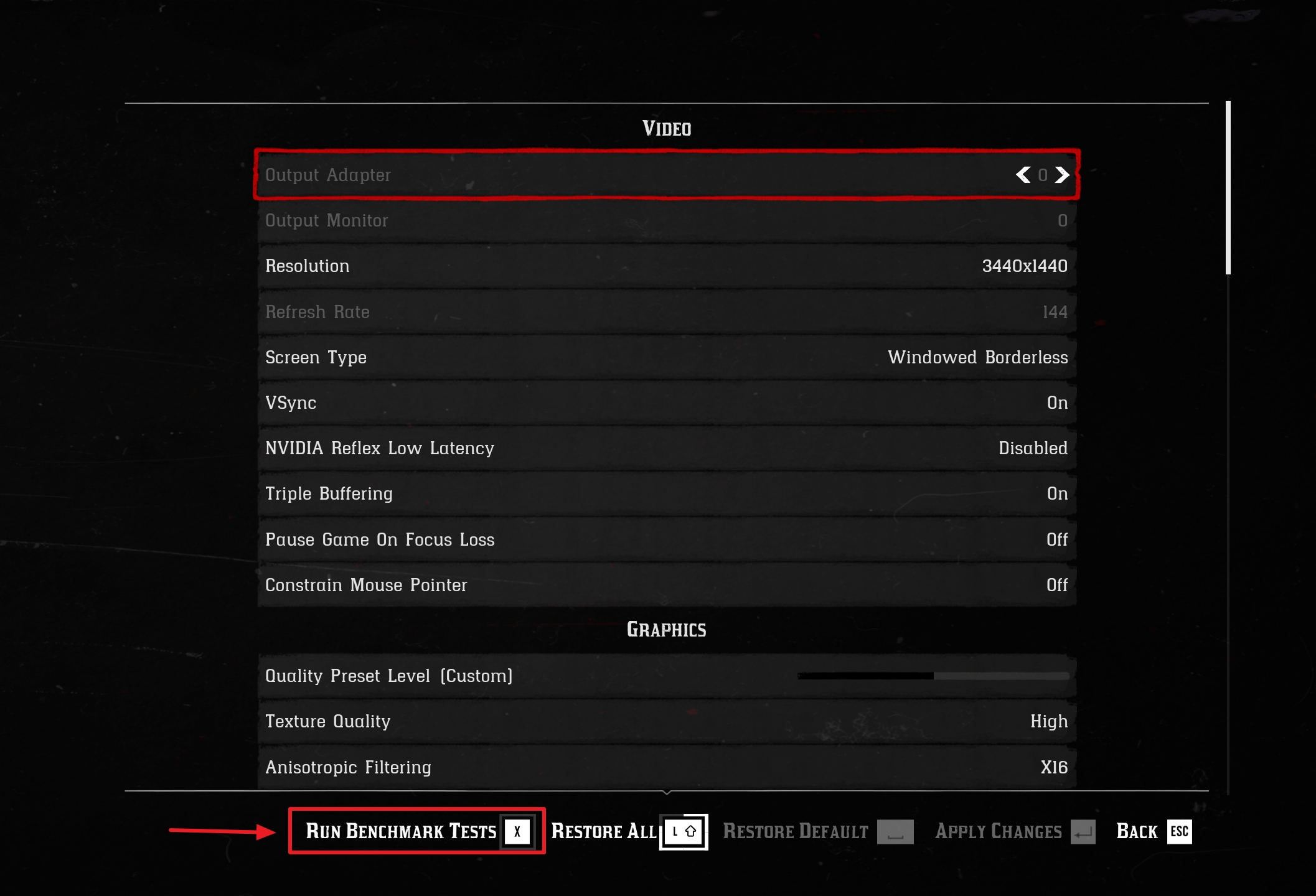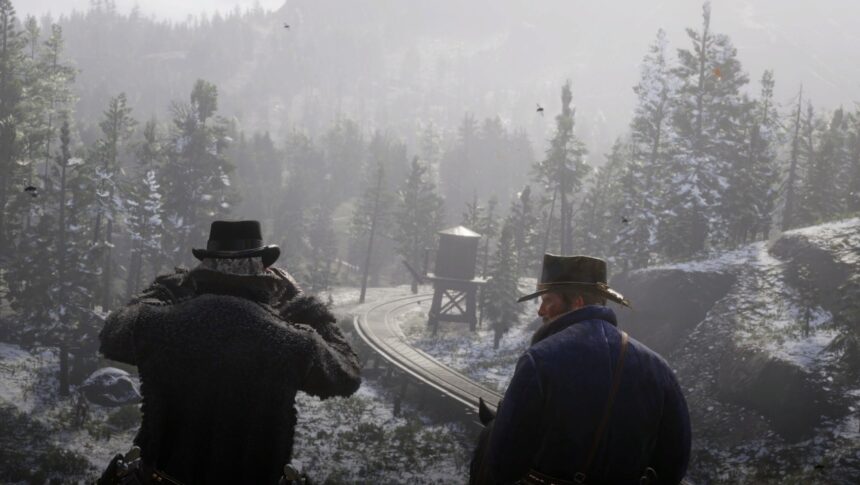Released back in 2018, Rockstar’s Red Dead Redemption 2 is still a very demanding game, especially for those looking to enjoy the Old West World in higher graphics, 4K quality, and all settings to maximum.
If you’re unsure if your PC can handle this title, you’re not alone. I’ve faced a few ups and downs when it comes to the performance and getting the highest FPS numbers that I could, and after trying and re-trying, I finally found out what works better for low-end, mid-range, and high-end hardware.
At the same time, I checked which settings had the biggest and lowest impact on both the CPU and GPU alike, and even how much VRAM they were consuming.
Best settings for Red Dead Redemption 2 based on your hardware
To get the smoothest frame rates while preserving Red Dead Redemption’s stunning visuals, you’ll want to turn down the heaviest hitters (lighting, water effects, SSAO) and lean on upscaling. Below is a balanced “sweet spot” that many PC players swear by, tested on a wide range of hardware:
| Setting | Low-end GPU/CPU | Mid-range GPU/CPU | High-end GPU/CPU | Approx. CPU Impact | Approx. VRAM Usage |
|---|---|---|---|---|---|
| Resolution Scale | 75% | 100% | 100% + FSR/DLSS (Quality) | Low GPU load | Variable (uses upscaling) |
| FSR / DLSS Mode | Off | Balanced | Quality | Negligible | Variable (boosts effective res) |
| Graphics API | DX12 | DX12 | Vulkan | Vulkan reduces CPU overhead on multi-core | n/a |
| Texture Quality | Low | High | Ultra | Minimal | Low: 1 GB / Med: 2 GB / High: 3 GB / Ultra: 4 GB |
| Anisotropic Filtering | Off | 8× | 16× | Negligible | Negligible |
| Lighting Quality | Low | Medium | High | Low: 5–8% CPU / Med: 10–15% / High: 20–25% | Low: 0.1 GB / Med: 0.2 GB / High: 0.3 GB |
| Global Illumination | Off | Low | Medium | Minimal | Low: 0.1 GB / Med: 0.2 GB |
| Shadow Quality | Low | Medium | High | Low: 3–5% CPU / Med: 8–10% / High: 15–20% | Low: 0.1 GB / Med: 0.2 GB / High: 0.4 GB |
| Far Shadow Quality | Off | Low | Medium | Minimal | Low: 0.1 GB / Med: 0.2 GB |
| Tessellation Quality | Off | Low | Medium | Minimal | Low: 0.1 GB / Med: 0.2 GB |
| Geometry Detail | Low | Medium | High | Low: 5% CPU / Med: 10% / High: 15% | Low: 0.1 GB / Med: 0.2 GB / High: 0.3 GB |
| Water Physics | Low | Medium | High | Low: 5% CPU / Med: 10% / High: 15–20% | Low: 0.1 GB / Med: 0.2 GB / High: 0.3 GB |
| Water Reflection Quality | Off | Low | Medium | Negligible | Low: 0.1 GB / Med: 0.2 GB |
| SSAO (Ambient Occlusion) | Off | Low | High | Negligible | Off: 0 GB / Low: 0.1 GB / High: 0.2 GB |
| Anti-Aliasing | FXAA | TAA | TAA + Sharpen | Low: 2–4% GPU cycles | Negligible |
| Motion Blur | Off | Medium | High | Negligible | Negligible |
| Depth of Field | Off | Low | High | Negligible | Negligible |
| Film Grain | Off | Low | High | Negligible | Negligible |
| Chromatic Aberration | Off | Off | Off | Negligible (can leave off for clarity) | Negligible |
| Vignette | Off | Off | Off | Negligible | Negligible |
| Frame Rate Limit | 30 FPS cap | 60 FPS cap | Uncapped / 120 FPS cap | Low | n/a |
| V‐Sync | Off | Adaptive | On (if screen-tearing) | Low | n/a |
Although not exactly the same, many of the settings listed above have the same impact when it comes to the first installment, too. So if you’re looking to play the old game before trying the second one, you can use the same table as an example, although I do have to note here that the first one is way less demanding.
How I’ve tested the game
With 48GB of RAM, an NVIDIA GEFORCE RTX 2060 (with 12GB VRAM) and an Intel Core i5 9600K, you can run Red Dead Redemption in 4K (3440×1440) and get 60-70 FPS, having most settings set at High. Lower them a bit, and you can easily hit the 100 FPS mark (especially if you’re playing Red Dead Online).
In campaign mode, having the settings a bit higher was okay, but in Red Dead Online, lowering them slightly was necessary for smoother gameplay.
How to check your FPS in Red Dead Redemption 2
What better way to check if those changes in your graphics have made any significant changes than running a quick benchmark? Thankfully, you won’t need a third-party tool to do so, as Rockstar has already implemented a Benchmark Test tool that does exactly that.
Just launch the game’s Settings, head over to Graphics, and press X on your keyboard to start the benchmark mode.

You can leave it for as long as you’d like, and it will constantly switch between different places with different weather conditions to fully test your hardware.
What settings worked better for your hardware and gave you the most FPS? Red Dead Redemption may be a 2018 title, but it still holds fairly well when it comes to minimum system requirements, and even newer hardware has a hard time processing all those details.











